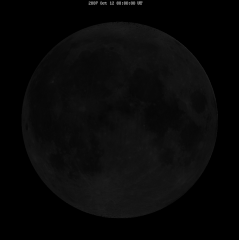🌙 Revealing the Phases of the Moon: A Journey to the Moon
🌿 What is the position of the Moon?
The Moon, Earth's celestial companion, dances through a fascinating cycle of phases, each offering a unique spectacle to stargazers. Here we explore the fascinating phases of the Moon, its visibility, celestial mechanics and extraordinary lunar events.
You can use our Moon Position Clock and check, for example, when the next full moon is and see the distance to the moon.
🌓 Moon phases
- 🌑 New moon: The moon is invisible, hidden in darkness.
- 🌒 Growing crescent: A narrow crescent marks the beginning of the journey towards the full moon.
- 🌓 First quarter: Half of the moon's face is illuminated.
- 🌔 Wasting Moon: The Moon shows a larger illuminated part.
- 🌝 Full moon: The moon dazzles with its perfect illumination.
- 🌖 The waning moon: The illuminated part of the moon gradually begins to wane.
- 🌗 Last quarter: The crescent moon appears illuminated in the opposite direction.
- 🌘 The waning crescent moon: Only the thin crescent of the Moon is visible.

This picture is from the Wikipedia page where you can read more about the phases of the Moon.
📅 Daily changes in the phases of the moon
The appearance of the moon changes gradually every day as it goes through its phases. The moon moves an average of 12-13 degrees east in the sky every day and its phase changes gradually.
👁️ Visibility of the moon in the sky
The moon is sometimes not visible for several days due to its position relative to the sun and the earth. During the new moon, the illuminated side points away from us. Visibility is also affected by weather conditions, light pollution and atmospheric disturbances.
🛰️ Moon's journey and its distance
The moon orbits the earth in an elliptical orbit, and it takes about 27.3 days to complete one revolution. On average, the Moon is about 384,400 kilometers from Earth. The proximity of the moon affects its appearance and size.
🎭 Special events
- 13 full moon years: In rare cases, there can be 13 full moons in a year instead of the usual 12.
- Eclipses: Solar and lunar eclipses occur when the sun, earth and moon are aligned in a certain position.
- Supermoon: When the moon is closest to Earth, it appears bigger and brighter.
📚 More information
Read more about the phases of the moon: Phases of the moon on Wikipedia
Revealing the Phases of the Moon New Moon, Waxing crescent, First quarter, Waxing Moon, Full Moon, Waning Moon, Last quarter, Waning Crescent, Distance to the Moon, Moon Eclipses, Blue Moon![]()
Language options
Other links on this site
- 🌝 The Moon: A Mystical Companion and Natural Phenomenon
- 📖 Moon Position: A Guide to Understanding its Significance
- 📍 Moon Position
- 🌍 Our Wonderful World And population clock calculator
- 🌞 The Sun: A Timeless Wonder with Boundless Power
- 📖 The position of the Sun: A Guide to Solar Time
- 📍 The position of the Sun
- 🌎 Solar Time Sun Clock Anywhere in the World
- ⌚ My Time: in a Changing World
- 📍 True Solar Time
- 🌐 GPS Navigation History. to New Horizons
- 🕌 Stay Connected to Prayer Times Anywhere with Our Convenient Tool
- 🙏 My Next Prayer Time
- 🏠 Homepage: Real Sun and Moon Time
- ℹ️ Information about Real Sun Time
- 🏖️ Sun and your Health
- 🌦️ My Local Weather site
- ✍️ Global Language Translations
- 💰 Sponsors and Donations
- 🥰 Real Sun Time User Experience
- 🌇 Catch The Sun